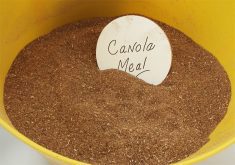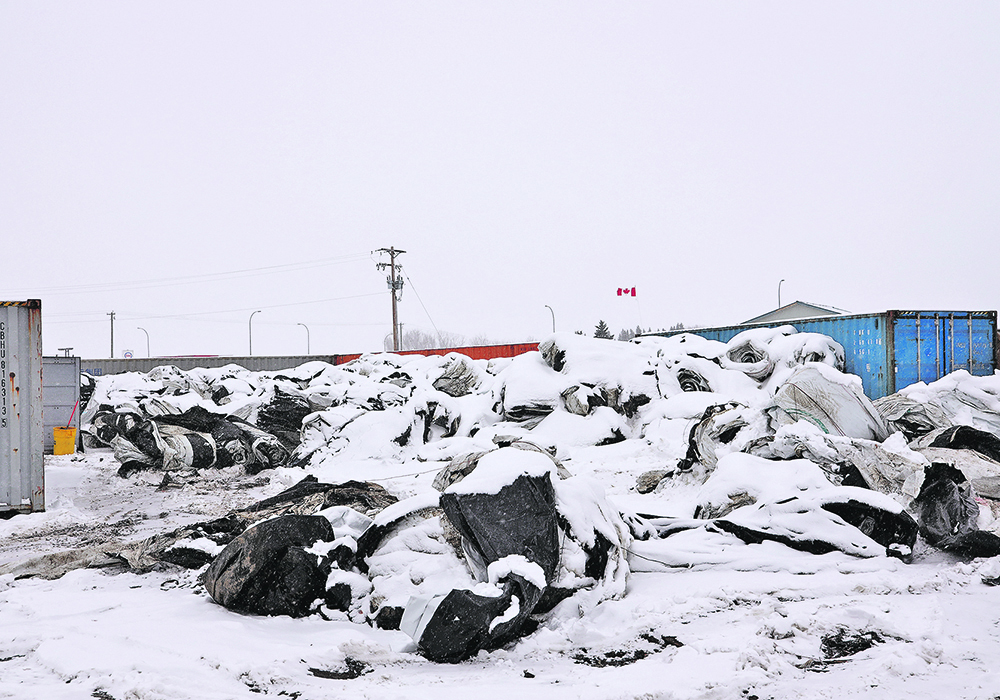The new technology could be used to recycle items such as waste grain bags by capturing the carbon dioxide and converting it back to plastic
Researchers have discovered a way to recycle waste greenhouse gases to make plastic.
“Our technology takes carbon dioxide and converts it into ethylene, which is the main precursor of plastic,” said Phil De Luna, a PhD student at the University of Toronto.
Using the Canadian Light Source at the University of Saskatchewan in Saskatoon, De Luna was part of a group of researchers from the U of T that recently found a new catalyst for recycling carbon dioxide.
“Our project is on developing new catalysts for converting carbon dioxide into useful fuels and feedstocks,” said De Luna.
Read Also

Message to provincial agriculture ministers: focus on international trade
International trade stakeholders said securing markets in the face of increasing protectionism should be the key priority for Canada’s agriculture ministers.
“For this particular project, we utilized a custom-made cell that could not have been done in any other light source in the world.”
Researchers used the light source’s high-powered X-rays to measure the oxidation state of copper, which is a metal that can convert carbon dioxide more efficiently and more selectively than any other catalyst.
“We were able to do this for the first time while the reaction is occurring, which is typically very hard to do because the reaction occurs in a liquid, kind of like an electrolyte,” he said.
Photosynthesis is the natural process that plants use by taking sunlight, water and carbon dioxide to make sugars and essential fuels needed for survival.
However, the U of T researchers are not focused on recycling carbon dioxide directly from the atmosphere.
“There are other researchers who are looking at capturing CO2 from the atmosphere. Basically, we’re kind of agnostic to where the source of carbon dioxide comes from. It can either be from flue stacks of let’s say a power plant, or for example it can be from the recycling of waste plastic,” he said.
“Capturing and conversion are kind of two separate technologies or two separate problems right now and we’re focusing more on the conversion part.”
“What we’re trying to do in our lab is to take carbon dioxide, water and renewable energy that’s either from solar, wind, or hydro and we’re trying to convert carbon dioxide into something that humans can use,” he said.
“Specifically, we converted it in this project into ethylene, which is the main precursor for polyethylene, a major plastic.”
However, De Luna pointed out that fossil fuels will continue to be consumed in the medium term as transition to renewable energy occurs.
“There simply isn’t enough solar cells, wind, or hydro to sustain our energy needs indefinitely. So, if we’re going to continue to burn fossil fuels, which we need to in order to sustain a quality of life, we need to be able to capture it and keep it from going into the atmosphere. But once we capture it, the question becomes what do we do with it,” he said.
From a recycling aspect, using end-of-life-cycle plastic is an important process to cleaning up the environment. Polyethylene is the most common plastic used today, with annual global production around 80 million tonnes.
“We have way too much plastic and the only thing that people can do to get rid of it that is effective and economically efficient is to burn it, which releases carbon dioxide into the atmosphere,” he said.
“If we can take post-consumer-use plastic — plastic that is being built up and kind of wasted or thrown into the oceans — if we can take that plastic and we can burn it, capture the carbon dioxide and then turn it back into plastic, then we’ve found a way to completely recycle something that is not normally biodegradable and something that is a lot harder to recycle than people think.”
Plastic grain bags that farmers buy in the thousands each year end up stockpiled or blowing in the wind. Often farmers burn them, which is illegal in Saskatchewan.
De Luna said the new technology is a good match for recycling the bags in a controlled environment to capture the carbon dioxide and convert them back to plastic.
“That’s kind of the ideal sort of market, or the ideal demographic that this could be useful. If you have a bunch of waste plastic and you don’t have anything to do with it, you have to burn it, but rather than letting that carbon dioxide just be admitted to the atmosphere, there are technologies where you can capture that carbon dioxide and then you can use our technology to recycle it and convert it back into plastic,” he said.
De Luna said the next step for the researchers is durability and to scale up the technology.
The U of T research group is a semifinalist for the NRG COSIA Carbon XPRIZE, which is $20 million for the team that can capture and convert the most carbon dioxide by 2020. Members will find out in March whether they have been shortlisted for the final contest round.
“Currently (in the lab) we can do grams per hour. Our pilot unit is kilograms per day and then in the next round we have two years to go to tonnes per day,” he said.
Besides government and third-party organizations, he said industry is putting considerable money into funding carbon sequestration research.
He said current problems will be addressed through the use of many different solutions like next generation solar as microgrid and smart grid systems.
“There’s not going to be just one sort of technology or one solution to climate change. It’s going to be a combination of many things.”
















